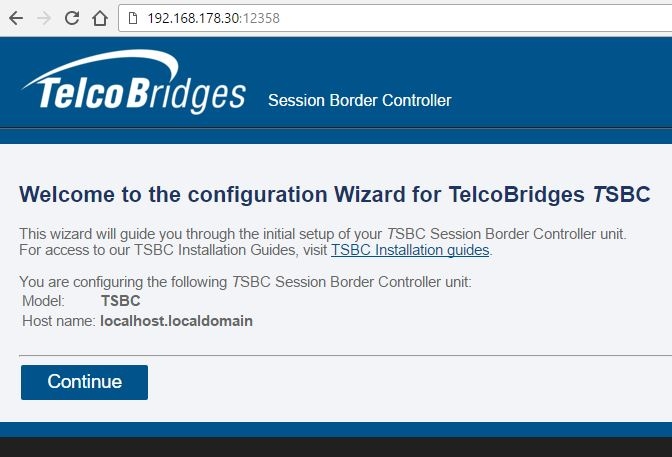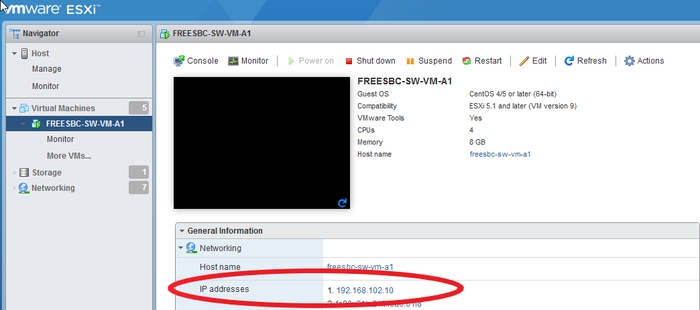Virtual - VMware
Requirements
Minimal Cloud requirements:
Vmware ESX 5 or 6
64-bit infrastructure only
E1000 NIC emulation or VMXNET3 interfaces
One Ethernet adapter for management (mgmt0)
One or more Ethernet adapter(s) for SIP and RTP traffic according to the table below (LAN/WAN)
If you are deploying ProSBC in a 1+1 configuration, you need two (2) additional Ethernet adapters to be used as control ports (ctrl0/ctrl1).
If you are deploying ProSBC with transcoding devices, you will need four (4) additional Ethernet adapters to be used as control and transcoding ports (ctrl0/ctrl1, trans0/trans1).
Up to 5,000
2 to 4
4 Gb
40 Gb
1 Gbps
5,001-20,000
4 to 6
8 Gb
60 Gb
4 X 1 Gbps or 1 X 10 Gbps
20,001-26,000
6 to 8
16 Gb
80 Gb
1 X 10 Gbps
** The CPU number is based on Intel R630 with Xeon E5-2643. Double the CPUs number if yours are from a earlier generations.
More details on HW/CPU/NIC requirements can be found here: Requirements Matrix
For better performance use these settings:
CPU resource: allocation shares set to 'high'
CPU resource: reservation set to maximum and no limit (i.e. 'unlimited')
Memory resource: reserve all guest memory (all locked)
Disk: shares 'high'
Advanced CPU: Hyperthread core sharing to 'None'
Latency Sensitivity: 'High'
Getting the Image
Please go to our ProSBC Download site to get a copy of the latest SBC Image.
Installation on VmWare cloud
ProBSC VmWare Image
A virtual machine image is a single file that contains a virtual disk that has a bootable operating system installed on it. Images are used to create virtual machine instances within the cloud.
You will need to upload the latest SBC image into your VmWare before you can launch a virtual machine instance running the SBC software.
Launching an instance
Using the vSphere client application
If you are installing a standalone SBC, the ProSBC or FreeSBC will need access to LAN/WAN and MGMT networks. For transcoding on TSBC-HW-TRANS, or HA pair installation, the ProSBC will also need access to CTRL0/CTRL1, and TRANS0/TRANS1 networks. In both instance launching methods above, when editing network adaptor, please take reference to ProSBC Networking for details on network requirements. For ProSBC Transcoding and associated network setup please also see Transcoding and Network Setup.
Accessing the SBC
Accessing console
You need to use the VMware console to access the system - SSH interface is not activated yet. Default username/password is root/root.
Assigning IP address
By default, all detect network interfaces will have DHCP enabled. Thus, the server might already have an IP address assigned if the network has a DHCP server running. In such case, you can display and use it to access the web portal configuration panel.
Retrieve an IP address assigned by DHCP
If you want to assigned a static IP address or there are no DHCP on your network, you will need to configure it manually.
Use tbchangeip shell command and answered questions to changed your Ethernet interface address:
Note: tbchangeip command applies for management interface (mgmt) only. This command does not apply for control interface (ctrl) nor voip interfaces (voip).
Note: No changes must be done to the repositories on the systems, and no other software should be installed unless written consent from TelcoBridges.
Accessing the SBC web portal
Open a web browser to the management IP of the SBC, on port 12358. Example if your server address is 192.168.178.30, the URL would be: http://192.168.178.30:12358
You should get to the SBC Configuration Wizard

If you do not know the IP address, you can find it from the VMware interface:

From here, you can go to Web Portal Initial Configuration Guide to continue the installation, and/or optimize your server to get the maximum out of your server.
Web Portal Initial Configuration
Click on the following link to pursue installation from the web portal: SBC Initial Configuration
Last updated
Was this helpful?
